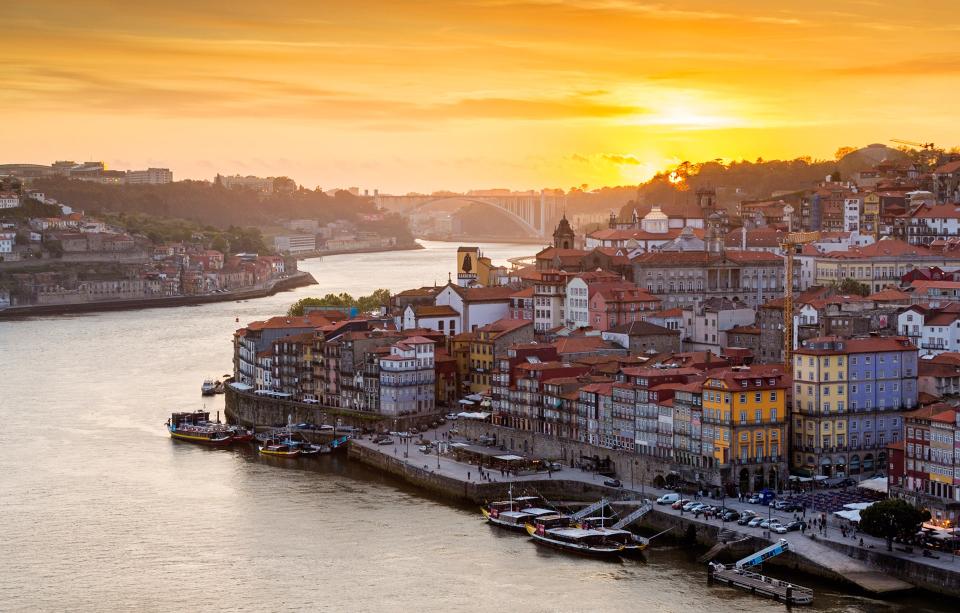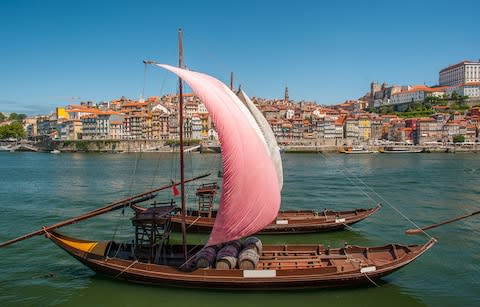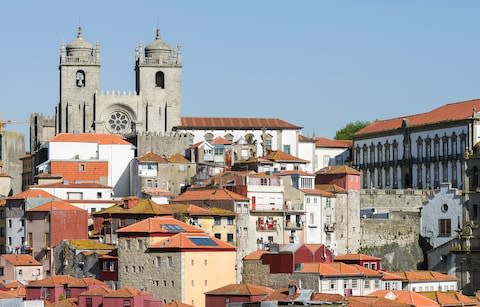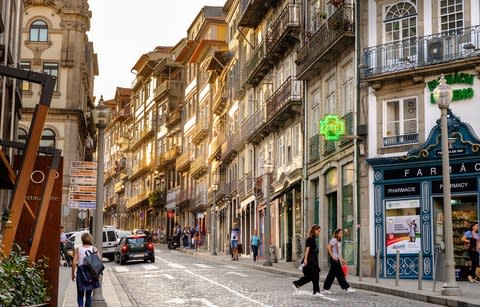Porto cruise port guide

Situated at the mouth of the Atlantic Ocean, it was from Porto that Prince Henry the Navigator set out in 1415 bound for Africa, heralding the Portuguese ‘Age of Discovery’. Modern-day Douro sailings begin and end in Portugal’s second city, which is divided in half by the waterway named ‘River of Gold’ by the Romans.
Why go?
Famous name port houses line the attractive waterfront in one of Europe’s oldest cities. On the opposite bank the winding medieval cobbled streets of Ribeira, the Unesco-listed old town, are filled with beautiful churches, elegant squares and a paint box kaleidoscope of brightly coloured houses with ornate tiled façades.
Location
The majority of ships moor in Vila Nova de Gaia on the southern bank opposite Ribeira, which can be reached by the Dom Luis I bridge. Some dock slightly further out of town so always check before booking. Scenic and sister company Emerald Waterways have an exclusive docking spot on the northern bank by Ribeira.
Can I walk to any places of interest?
From the Gaia docking area there are many port houses and wine cellars that are a short stroll away and it’s easy to walk across the lower pedestrian section of the bridge – a sightseeing highlight in its own right – to reach Ribeira.
Getting around
The city is built on hills and public transport, including metro, bus, trams and a funicular, is the easiest way to reach different areas. The Andante Tour Card, widely available in tourist offices, stations and hotels, is specifically aimed at visitors and provides unlimited transport for 24 hours or more.

What to see and do
What can I do in four hours or less?
Ribeira is an excellent starting point. Behind the riverfront the city slopes steeply upwards, leading to a maze of streets and impressive buildings such as Casa do Infante, where Prince Henry the Navigator was born in 1394 and now a museum. From Ribeira a fun way to reach the high district of Barredo is on the Elevador da Ribeira, a huge open lift. From here there are steps back down to the river.
Ships’ coach tours will include the viewing point on the Gaia side of the Douro, which can be reached on public transport. It overlooks the impressive 564ft span of the Dom Luis I bridge designed by a pupil of Gustave Eiffel and the world’s longest iron arch bridge when it opened in 1886.
What can I do in eight hours or less?
Built on the highest point in the city, Porto Cathedral is a National Monument. Rebuilt several times since the 12th century, it is a mix of Gothic and Romanesque architectural styles. The 14th century cloister is decorated with tiles depicting Biblical scenes and well worth the small entrance fee for visitors who opt to go independently.

Ship excursions will also feature tours to learn about – and taste – Porto’s most famous export with guided tours of the atmospheric port houses to see huge wooden casks filled with fortified wine. Back outside, visitors can take a trip on historic rabelos, the wooden vessels once used to transport port along the Douro.
Harry Potter fans will be interested in the ornate staircase at Lello bookstore, which provided JK Rowling with the inspiration for the stairs at Hogwarts when she was as an English teacher in Porto.
What can I do with a bit longer?
Fado, the haunting songs and music associated with the sea, originated in Portugal in the 19th century. Ships offer a city by night tour taking in a fado dinner show, or passengers can just listen out for the melancholic notes drifting out of bars and restaurants and step inside.

Eat and drink
In Portugal, port is not just for Christmas or after dinner sipping, so join the locals and try refreshing cocktails mixed with white or pink port along with lighter ports served throughout meals. Tuck into a flaky Portuguese egg tart, or pastel de nata, sold at all bakeries and first baked by nuns more than 200 years ago. The Francesinha, a layered meat sandwich topped with cheese and a sauce made from beer and tomatoes, is the local fast food of choice and a filling snack while sightseeing.
Don’t leave Porto without…
Portugal is the largest producer of cork, which is made into all kinds of novel items including wallets, handbags, hats and umbrellas. If bottles are too much to bring home there are tasty port chocolates. Individual hand-crafted azulejos, the traditional blue and white tiles seen around the city, also make good souvenirs.
Need to know
Flight time from the UK
A short two hours and 15 minutes.

Safety
Take the usual precautions against pick-pockets and stay in well-lit tourist areas at night.
Best time to go
Porto’s a year-round city, but if you plan to walk a lot avoid July and August when it can be uncomfortably hot.
Closures
Most museums and monuments are closed on Monday and shops shut on Sunday.
Save money
The Porto Card provides unlimited public transport, free entry into 11 attractions and other discounts.

